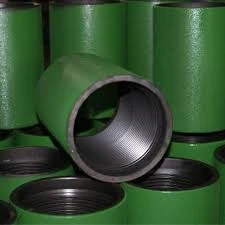- Afrikaans
- Albanian
- Amharic
- Arabic
- Armenian
- Azerbaijani
- Basque
- Belarusian
- Bengali
- Bosnian
- Bulgarian
- Catalan
- Cebuano
- Corsican
- Croatian
- Czech
- Danish
- Dutch
- English
- Esperanto
- Estonian
- Finnish
- French
- Frisian
- Galician
- Georgian
- German
- Greek
- Gujarati
- Haitian Creole
- hausa
- hawaiian
- Hebrew
- Hindi
- Miao
- Hungarian
- Icelandic
- igbo
- Indonesian
- irish
- Italian
- Japanese
- Javanese
- Kannada
- kazakh
- Khmer
- Rwandese
- Korean
- Kurdish
- Kyrgyz
- Lao
- Latin
- Latvian
- Lithuanian
- Luxembourgish
- Macedonian
- Malgashi
- Malay
- Malayalam
- Maltese
- Maori
- Marathi
- Mongolian
- Myanmar
- Nepali
- Norwegian
- Norwegian
- Occitan
- Pashto
- Persian
- Polish
- Portuguese
- Punjabi
- Romanian
- Russian
- Samoan
- Scottish Gaelic
- Serbian
- Sesotho
- Shona
- Sindhi
- Sinhala
- Slovak
- Slovenian
- Somali
- Spanish
- Sundanese
- Swahili
- Swedish
- Tagalog
- Tajik
- Tamil
- Tatar
- Telugu
- Thai
- Turkish
- Turkmen
- Ukrainian
- Urdu
- Uighur
- Uzbek
- Vietnamese
- Welsh
- Bantu
- Yiddish
- Yoruba
- Zulu
tubing and casing
Understanding Tubing and Casing in the Oil and Gas Industry
In the oil and gas industry, the extraction of resources from deep beneath the Earth's surface involves complex operations and processes. One of the critical aspects of these operations is the use of tubing and casing—two essential components of well construction that ensure the safe and efficient production of hydrocarbons. Understanding the differences, functions, and significance of tubing and casing is crucial for engineers, operators, and anyone interested in the petroleum sector.
What is Casing?
Casing refers to the series of steel pipes installed in a wellbore to provide structural integrity and isolate different geological formations. The primary function of casing is to prevent the walls of the borehole from collapsing, which is particularly important in softer, less stable formations. Casing also serves to protect groundwater resources from contamination by hydrocarbons or drilling fluids, thereby ensuring compliance with environmental regulations.
The process of casing involves several steps. Once the well is drilled to a specified depth, casing is lowered into the wellbore and is then cemented in place. This cement acts as a seal, bonding the casing to the wellbore wall and providing additional support. There are various types of casing, including surface casing, intermediate casing, and production casing, each with specific purposes and requirements depending on the well's depth and the geological conditions.
What is Tubing?
On the other hand, tubing is the pipeline that carries the hydrocarbons from the reservoir to the surface. It is installed inside the casing and is typically smaller in diameter than the casing. Tubing is designed to withstand the harsh conditions of the well environment, including high pressure and temperature variations. It is essential for the efficient flow of oil and gas from the reservoir to the surface facilities.
tubing and casing

Unlike casing, tubing is a more flexible component. It allows for the installation of additional tools and equipment, such as pumps and gauges, which can be crucial for optimizing production. Tubing can be run or removed from the wellbore without disturbing the casing, which provides operators with the flexibility to perform maintenance activities or conduct interventions, enhancing the overall productivity of the well.
The Relationship Between Casing and Tubing
The relationship between casing and tubing is integral to the overall function of oil and gas wells. Casing provides the structural support necessary for safe drilling and production, while tubing serves as the transport mechanism for the produced fluids. In many cases, multiple strings of casing may be installed to isolate formations and provide safety barriers before the tubing is set in place.
This hierarchy is vital for managing pressures within the well and preventing failures that could lead to blowouts or leaks. Proper casing and tubing designs, along with effective cementing practices, are essential for maintaining the integrity of the well throughout its life cycle.
Conclusion
In summary, tubing and casing are indispensable components of the oil and gas extraction process. Casing ensures the structural integrity of the well and protects the surrounding environment, while tubing facilitates the efficient flow of hydrocarbons to the surface. As the industry continues to evolve, advancements in materials and technologies are improving the performance and reliability of both casing and tubing, thereby enhancing safety and production efficiency.
An in-depth understanding of these components is essential for industry professionals, as it plays a crucial role in well design, execution, and overall operational success. As we face the challenges of energy demands and sustainability, optimizing the use of tubing and casing will be pivotal in ensuring the continued viability of oil and gas operations.
-
Tubing Pup Joints: Essential Components for Oil and Gas OperationsNewsJul.10,2025
-
Pup Joints: Essential Components for Reliable Drilling OperationsNewsJul.10,2025
-
Pipe Couplings: Connecting Your World EfficientlyNewsJul.10,2025
-
Mastering Oilfield Operations with Quality Tubing and CasingNewsJul.10,2025
-
High-Quality Casing Couplings for Every NeedNewsJul.10,2025
-
Boost Your Drilling Efficiency with Premium Crossover Tools & Seating NipplesNewsJul.10,2025







